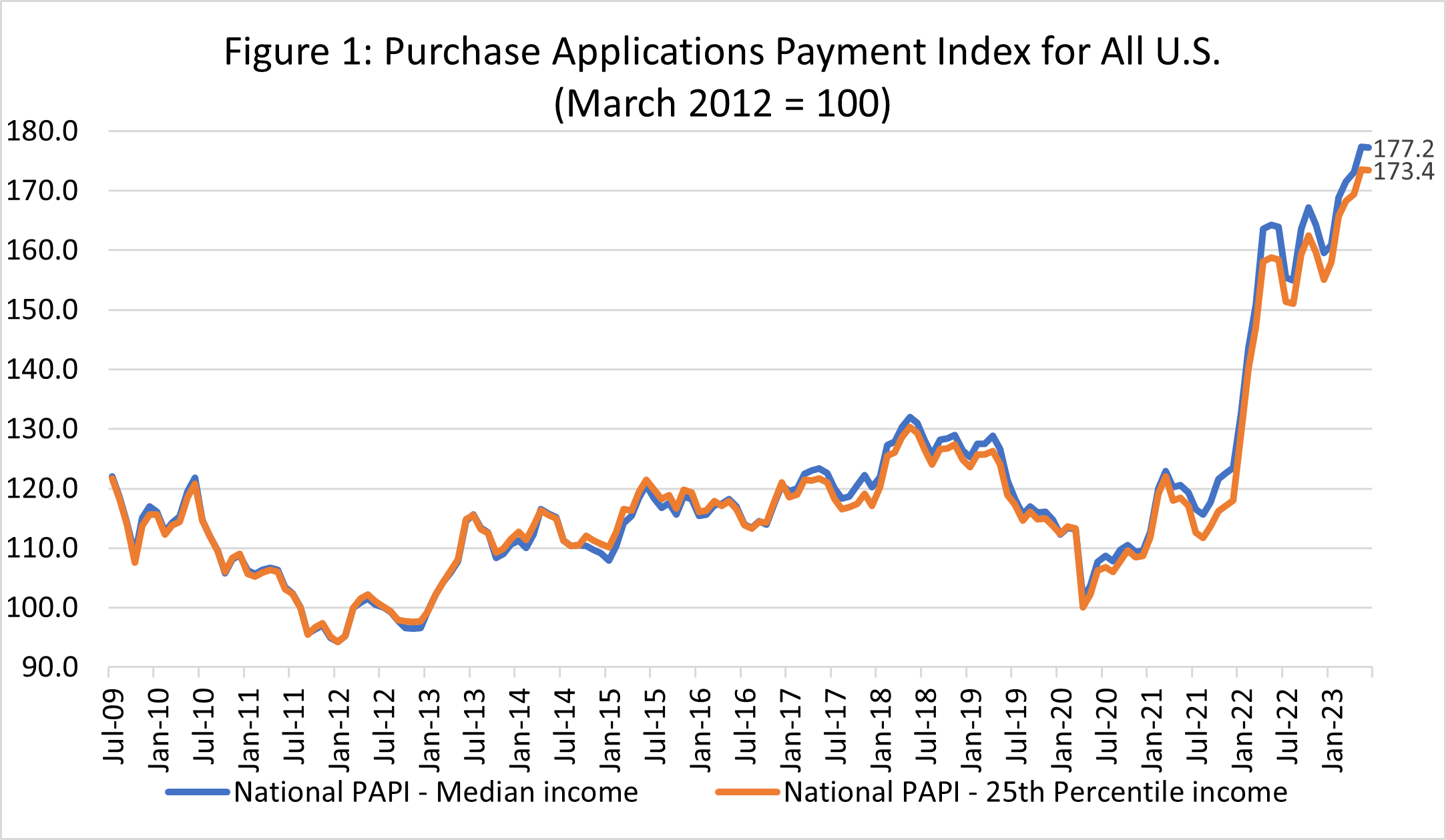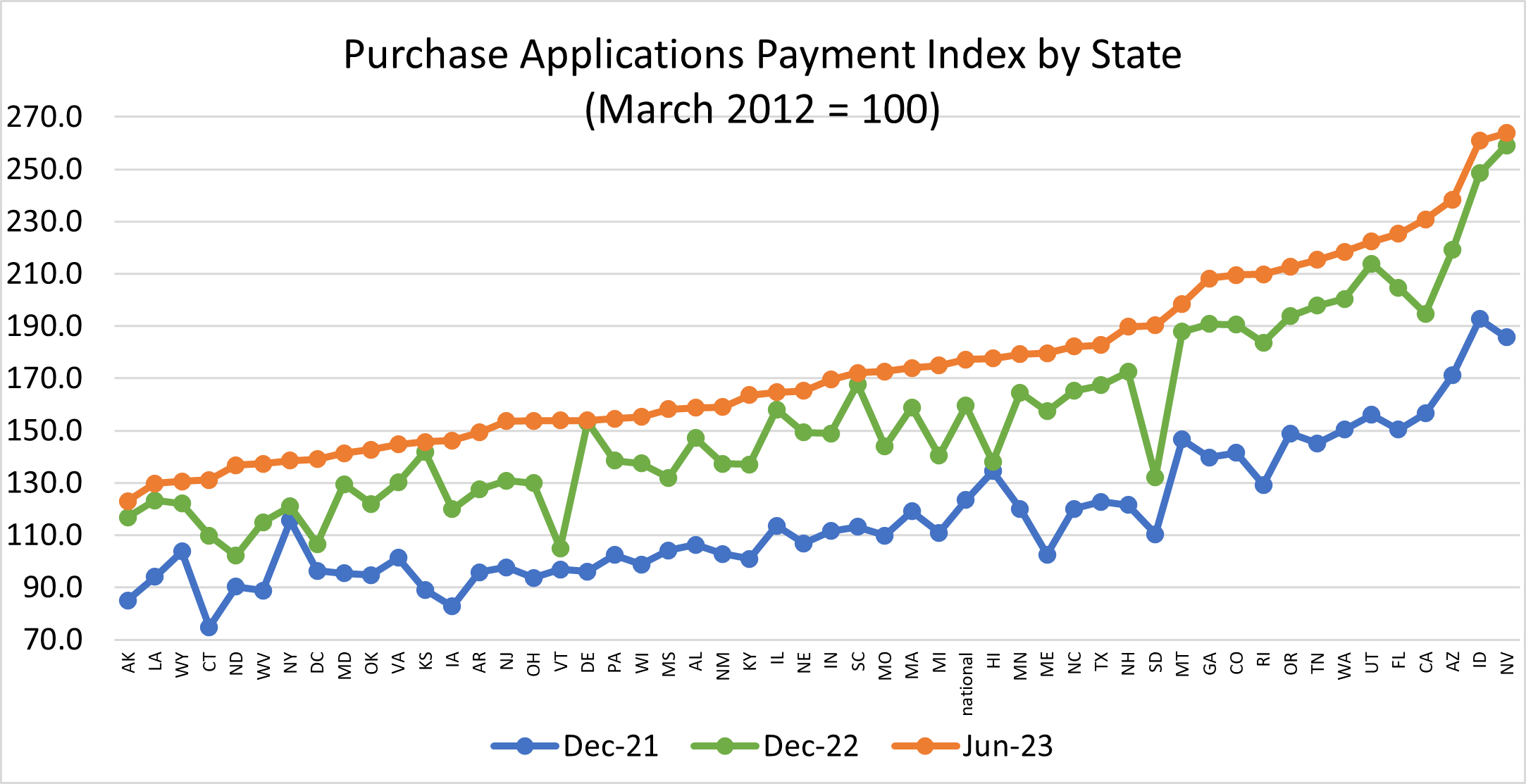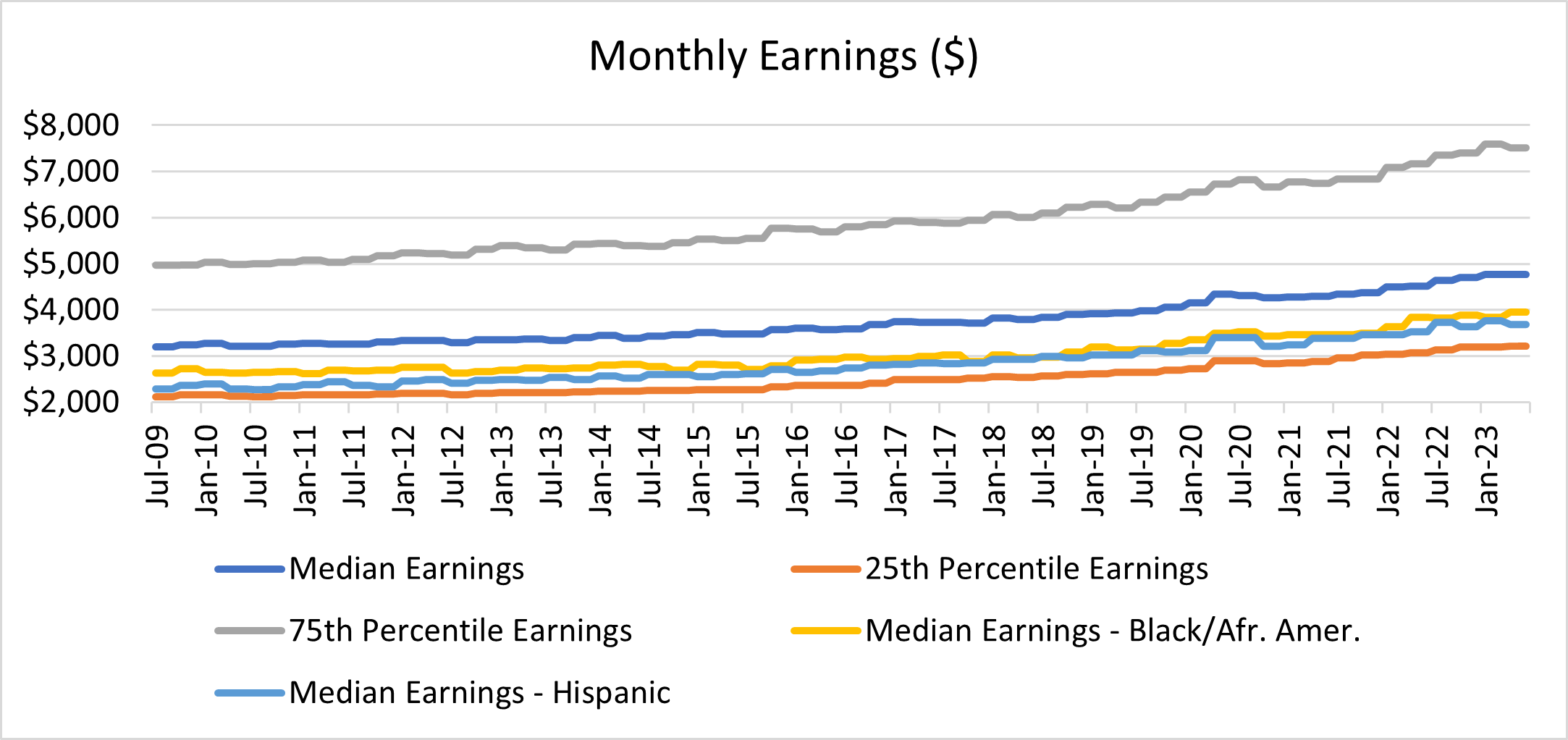Mortgage Application Payments Flat in June
July 27, 2023
Share to
WASHINGTON, D.C. (July 27, 2023) – Homebuyer affordability was essentially flat in June, with the national median payment applied for by purchase applicants decreasing 0.1 percent to $2,162 from $2,165 in May. This is according to the Mortgage Bankers Association's (MBA) Purchase Applications Payment Index (PAPI), which measures how new monthly mortgage payments vary across time – relative to income – using data from MBA’s Weekly Applications Survey (WAS).
“Homebuyer affordability is still strained this summer, with mortgage rates remaining high and volatile, and home prices high because of low inventory,” said Edward Seiler, MBA’s Associate Vice President, Housing Economics, and Executive Director, Research Institute for Housing America. “The median purchase application amount fell from $330,000 to $326,000 in June, which is one positive sign that home prices are stabilizing. An ongoing combination of flattening home prices and lower rates would offer reprieve for households who are looking to buy a home.”
An increase in MBA’s PAPI – indicative of declining borrower affordability conditions – means that the mortgage payment to income ratio (PIR) is higher due to increasing application loan amounts, rising mortgage rates, or a decrease in earnings. A decrease in the PAPI – indicative of improving borrower affordability conditions – occurs when loan application amounts decrease, mortgage rates decrease, or earnings increase.
The national PAPI (Figure 1) decreased 0.1 percent to 177.2 in June from 177.4 in May. While the index decreased slightly last month, the PAPI still remains at elevated levels. Median earnings were up 5.7 percent compared to one year ago and while payments increased by 14.2 percent, the strong earnings growth means that the PAPI is up 8.1 percent on an annual basis. For borrowers applying for lower-payment mortgages (the 25th percentile), the national mortgage payment decreased to $1,459 in June from $1,462 in May.
The Builders’ Purchase Application Payment Index (BPAPI) showed that the median mortgage payment for purchase mortgages from MBA’s Builder Application Survey increased from $2,515 in May to $2,520 in June.
Additional Key Findings of MBA's Purchase Applications Payment Index (PAPI) – June 2023
- The national median mortgage payment was $2,162 in June, down from $2,165 in May. This is up $269 from one year ago, equal to a 14.2% increase.
- The national median mortgage payment for FHA loan applicants was $1,824 in June, up from $1,802 in May and up from $1,474 in June 2022.
- The national median mortgage payment for conventional loan applicants was $2,205, up from $2,202 in May and from $1,959 in June 2022.
- The top five states with the highest PAPI were: Nevada (263.9), Idaho (260.9), Arizona (238.4), California (230.8), and Florida (225.3).
- The top five states with the lowest PAPI were: Alaska (123.1), Louisiana (129.8), Wyoming (130.6), Connecticut (131.0), and North Dakota (136.8).
- Homebuyer affordability increased slightly for Black households, with the national PAPI decreasing from 176.5 in May to 176.3 in June.
- Homebuyer affordability increased slightly for Hispanic households, with the national PAPI decreasing from 169.1 in May to 168.9 in June.
- Homebuyer affordability increased slightly for White households, with the national PAPI decreasing from 178.7 in May to 178.5 in June.



About MBA’s Purchase Applications Payment Index
The Mortgage Bankers Association’s Purchase Applications Payment Index (PAPI) measures how new mortgage payments vary across time relative to income. Higher index values indicate that the mortgage payment to income ratio (PIR) is higher than in a month where the index is lower. Contrary to other affordability indexes that make multiple assumptions about mortgage underwriting criteria to estimate mortgage payment level, PAPI directly uses MBA’s Weekly Applications Survey (WAS) data to calculate mortgage payments.
PAPI uses usual weekly earnings data from the U.S. Bureau of Labor Statistics’ Current Population Survey (CPS). Usual weekly earnings represent full-time wage and salary earnings before taxes and other deductions and include any overtime pay, commissions, or tips usually received. Note that data are not seasonally adjusted.
MBA’s Builders’ Purchase Application Payment Index (BPAPI) uses MBA’s Builder Application Survey (BAS) data to create an index that measures how new mortgage payments vary across time relative to income, with a focus exclusively on newly built single-family homes. As with PAPI, higher index values indicate that the mortgage payment to income ratio (PIR) is higher than in a month where the index is lower. To create BPAPI, principal and interest payment amounts are deflated by the same earnings series as in PAPI.
The rent data series calculated for MBA’s national mortgage payment to rent ratio (MPRR) comes from the U.S. Census Bureau’s Housing Vacancies and Homeownership (HVS) survey’s median asking rent. The HVS data is quarterly, and as such, the mortgage payment to rent ratio will be updated quarterly. The MPRR was not included in the June 2023 data.
For additional information on MBA’s Purchase Applications Payment Index, click here.
